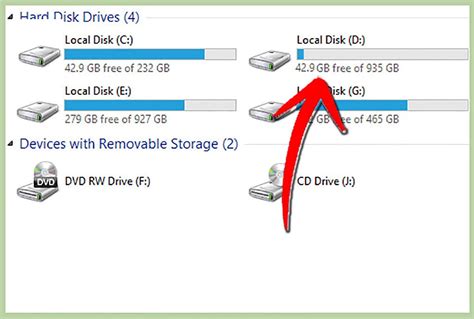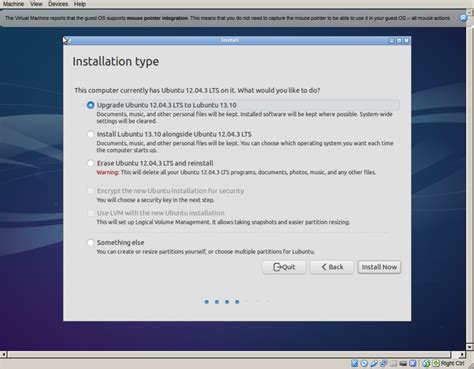clone hard drive dual boot ubuntu | move ubuntu to hard drive clone hard drive dual boot ubuntu I have done the following: Created a live USB for booting as mentioned on the CloneZilla website. Created an image of the entire HDD on the source computer, on a pocket . Malt liquor is beer with more alcohol than the 3.5-4% ABV adjunct lagers that were standard in the US through the first half of the 20th century. It’s about 20% stronger than "regular" beer.
0 · ubuntu clone boot drive
1 · move ubuntu to hard drive
2 · move ubuntu to another hard drive
3 · migrate ubuntu to new computer
4 · clone ubuntu to new machine
5 · clone ubuntu to new drive
6 · clone ubuntu to new computer
7 · clone ubuntu to another computer
Acciaio Oystersteel Altamente resistente alla corrosione. Rolex utilizza per le .
To copy MBR simply use the dd command. The dd command works under all Linux distros and other UNIX like operating systems too. A master boot record (MBR) is the 512-byte boot sector that is the first sector of a partitioned data storage device of a hard disk. MBR .

I'm planning on replacing my laptop's HDD with a 256GB SSD, but I have a dual-boot (12.04 and Windows 7) setup and I'd like to be able to directly migrate Ubuntu over without having to . I have done the following: Created a live USB for booting as mentioned on the CloneZilla website. Created an image of the entire HDD on the source computer, on a pocket . What worked for me in the end was to let Windows boot the other Windows. I used EasyBCD in the sda Windows to set up dual-boot between the two Windowses. Then I set . Copy the Windows boot loader to the SSD by using # ntfsclone --overwrite /dev/sda1 /dev/sdb1. Copy the Windows system volume to the SSD by using # ntfsclone - .
I'm trying to move my Ubuntu installation to a new SSD but all the guides that I found are either incomplete or the partition layout is different than mine. I would use Ubuntu live and clone the sdd5 partition with gparted to the . To clone your computer's hard disk, use the command: dd if=/dev/sdX of=/dev/sdY bs=64K conv=noerror,sync. Let's break this command down for clarity: sdX is the source disk. .
You can clone hard drive with dual boot OS to a new SSD or HDD using a professional disk clone tool like MiniTool Partition Wizard or MiniTool ShadowMaker. According to a survey, we find that users may choose to move . 1. Download the Ubuntu ISO File. After backing up data, the first step of installing Ubuntu is to download Ubuntu’s ISO file. I’m downloading a 64-bit installer of Ubuntu 22.04.3 LTS. 2. Create a Bootable USB Drive. To create .
To copy MBR simply use the dd command. The dd command works under all Linux distros and other UNIX like operating systems too. A master boot record (MBR) is the 512-byte boot sector that is the first sector of a partitioned data storage device of a hard disk. MBR Total Size. 446 + 64 + 2 = 512.
I'm planning on replacing my laptop's HDD with a 256GB SSD, but I have a dual-boot (12.04 and Windows 7) setup and I'd like to be able to directly migrate Ubuntu over without having to reinstall and lose all of my settings. Here are the things you need in this tutorial: A computer that comes preinstalled with Windows 10 and has both an SSD and an HDD. A USB key (pen drive or USB drive) of at least 4 GB in size and no data on it. Internet connection (for downloading Ubuntu ISO image and live USB creating tool). I have done the following: Created a live USB for booting as mentioned on the CloneZilla website. Created an image of the entire HDD on the source computer, on a pocket HDD with 1TB space. Now I want to copy the image (cloning activity Part 2), to the new HDD.
What worked for me in the end was to let Windows boot the other Windows. I used EasyBCD in the sda Windows to set up dual-boot between the two Windowses. Then I set Grub as my main bootloader, and had it either boot one of the Linuxes, or chainload to the sda Windows (the Grub is on the same disk). Copy the Windows boot loader to the SSD by using # ntfsclone --overwrite /dev/sda1 /dev/sdb1. Copy the Windows system volume to the SSD by using # ntfsclone --overwrite /dev/sda2 /dev/sdb2 . Find out how much you can expand the new NTFS volume by running # ntfsresize -n -i /dev/sda2 . I'm trying to move my Ubuntu installation to a new SSD but all the guides that I found are either incomplete or the partition layout is different than mine. I would use Ubuntu live and clone the sdd5 partition with gparted to the new ssd. To clone your computer's hard disk, use the command: dd if=/dev/sdX of=/dev/sdY bs=64K conv=noerror,sync. Let's break this command down for clarity: sdX is the source disk. sdY is the destination. bs is the block size command. 64K corresponds to bs. About the 64K settings, the default value is 512 bytes, which is rather small.
You can clone hard drive with dual boot OS to a new SSD or HDD using a professional disk clone tool like MiniTool Partition Wizard or MiniTool ShadowMaker. According to a survey, we find that users may choose to move dual boot OS . 1. Download the Ubuntu ISO File. After backing up data, the first step of installing Ubuntu is to download Ubuntu’s ISO file. I’m downloading a 64-bit installer of Ubuntu 22.04.3 LTS. 2. Create a Bootable USB Drive. To create a bootable USB drive of the ISO file, use “Etcher”. It is a free and open-source application. To copy MBR simply use the dd command. The dd command works under all Linux distros and other UNIX like operating systems too. A master boot record (MBR) is the 512-byte boot sector that is the first sector of a partitioned data storage device of a hard disk. MBR Total Size. 446 + 64 + 2 = 512.I'm planning on replacing my laptop's HDD with a 256GB SSD, but I have a dual-boot (12.04 and Windows 7) setup and I'd like to be able to directly migrate Ubuntu over without having to reinstall and lose all of my settings.
Here are the things you need in this tutorial: A computer that comes preinstalled with Windows 10 and has both an SSD and an HDD. A USB key (pen drive or USB drive) of at least 4 GB in size and no data on it. Internet connection (for downloading Ubuntu ISO image and live USB creating tool). I have done the following: Created a live USB for booting as mentioned on the CloneZilla website. Created an image of the entire HDD on the source computer, on a pocket HDD with 1TB space. Now I want to copy the image (cloning activity Part 2), to the new HDD.
What worked for me in the end was to let Windows boot the other Windows. I used EasyBCD in the sda Windows to set up dual-boot between the two Windowses. Then I set Grub as my main bootloader, and had it either boot one of the Linuxes, or chainload to the sda Windows (the Grub is on the same disk). Copy the Windows boot loader to the SSD by using # ntfsclone --overwrite /dev/sda1 /dev/sdb1. Copy the Windows system volume to the SSD by using # ntfsclone --overwrite /dev/sda2 /dev/sdb2 . Find out how much you can expand the new NTFS volume by running # ntfsresize -n -i /dev/sda2 . I'm trying to move my Ubuntu installation to a new SSD but all the guides that I found are either incomplete or the partition layout is different than mine. I would use Ubuntu live and clone the sdd5 partition with gparted to the new ssd. To clone your computer's hard disk, use the command: dd if=/dev/sdX of=/dev/sdY bs=64K conv=noerror,sync. Let's break this command down for clarity: sdX is the source disk. sdY is the destination. bs is the block size command. 64K corresponds to bs. About the 64K settings, the default value is 512 bytes, which is rather small.

You can clone hard drive with dual boot OS to a new SSD or HDD using a professional disk clone tool like MiniTool Partition Wizard or MiniTool ShadowMaker. According to a survey, we find that users may choose to move dual boot OS .
ubuntu clone boot drive

michael kors plate sandals

Choose a true watchmaking icon with the Seamaster Professional Diver 300M. Created in 1993, it has constantly been evolving with the best innovation and pioneering technology to become one of the most authentic ocean timepieces in the world. Read more. Complimentary delivery.
clone hard drive dual boot ubuntu|move ubuntu to hard drive



























